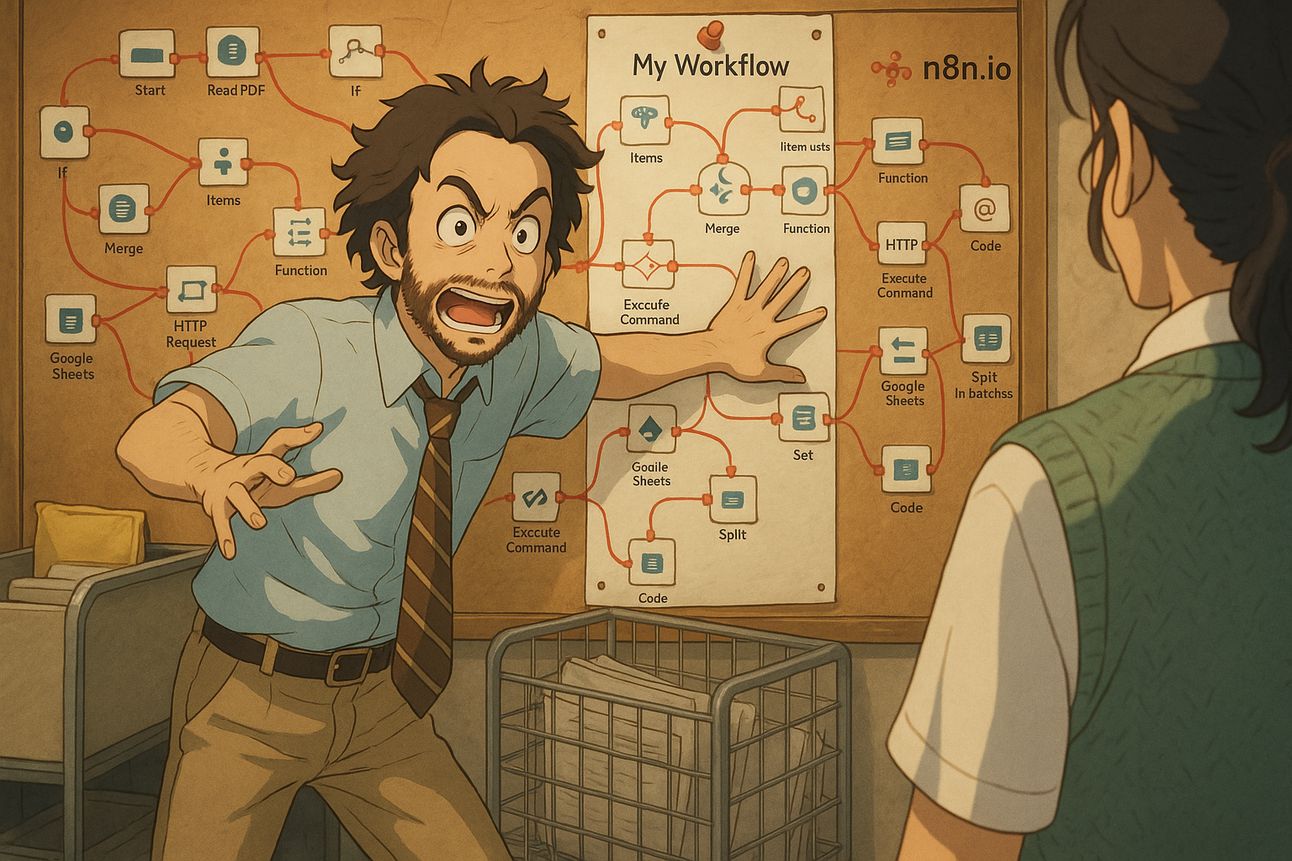- Markfive Newsletter
- Posts
- What's your automation potential?
What's your automation potential?
How to think about automating your business processes, before you begin investing in complex AI-powered workflows.
Hey everyone,
Welcome back to the Markfive newsletter, where we cover AI automation strategies you can add to your business in a day.
Earlier this week, I was speaking to a founder in the media industry. He was asking how to cut down the amount of time his team spent creating his company's weekly email newsletter (25+ hours per week!) because they were all starting to burn out.
My answer to him wasn't some fancy, highly-customized 100+ step n8n workflow. I actually think end-to-end automations for content creation are often overrated, but that's a topic for another newsletter.

Before you even touch an automation tool, it's best to nail down these four best practices in your business so you can build a solid foundation to really get the most out of automation.
Introducing My 4-Step Automation Checklist
You understand that automation is valuable, but you don't know how to assess what can and should be automated — otherwise known as the automation potential of your business.
Here's how to do it in four simple steps:
Step 1: Identify something that just feels inefficient. Is there something you do on a daily or weekly basis that makes you think "not this again…"?
Step 2: Has that process looked the exact same for the last 3-6 months?
Step 3: Could you write down the exact steps and hand it off to a new team member to follow without any issues?
Step 4: Have you actively looked for solutions outside of automation that were not as effective?
If the answer to all of these questions was yes, you have something ripe with automation potential. You should definitely consider automating with AI + no-code tools (pick any platform to start, then move onto another if you find it doesn't fit your needs).
What to Do If You Answered "No"
Now I'll make the case for what you should do instead of automating if you answered no to any of these questions.
If there's nothing you do daily or weekly that feels inefficient...
It's either not that big of a problem — OR it's a huge problem, you just don't realize it could be automated with no-code and AI. This ties into step three, where you write down the exact steps of your workflow. Once documented, you can pass it to ChatGPT and ask: "How do I automate these steps using n8n, Gumloop, Zapier, etc.?"
If your process keeps changing...
You want to pick something that hasn't changed process-wise in the last 3-6 months, because there's no sense automating something without a standard operating procedure. AI and automation are great for getting the job done, but what if the "job" (your highly variable process) isn't the optimal solution yet?
If you can't clearly document the steps...
This is actually the most common blocker I see. If you can't explain it simply enough for someone else to follow, the process likely needs refinement before automation. Take time to standardize and document first.
If you haven't tried simpler solutions...
Sometimes the answer isn't automation — it's better templates, clearer communication, or eliminating unnecessary steps entirely. Always exhaust the simple fixes before building complex workflows.
Your Next Steps
Either today or next week, I challenge you to:
Audit one repetitive task using the 4-step checklist above
Document the exact process in a simple bullet-point format
Identify which step failed (if any) and address that first before considering automation
Sometimes the best automation is no automation at all. Then when you’ve got the basics nailed down, layering on automation is like installing elevators in a well-built skyscraper.
What repetitive task will you evaluate this week? Hit reply and let me know!
Talk soon,
Momin
*everything after this point is sponsored material
Never Miss Another Warm Lead With Our AI BDR
Never miss a hot lead again. Our AI BDR Ava tracks intent signals across the web—triggering perfectly timed outreach when prospects are ready to buy.
She operates within the Artisan platform, which consolidates every tool you need for outbound:
300M+ High-Quality B2B Prospects, including E-Commerce and Local Business Leads
Automated Lead Enrichment With 10+ Data Sources
Full Email Deliverability Management
Multi-Channel Outreach Across Email & LinkedIn
Human-Level Personalization
Free up your sales team to focus on high-value interactions and closing deals, while Ava handles the time-consuming tasks.
